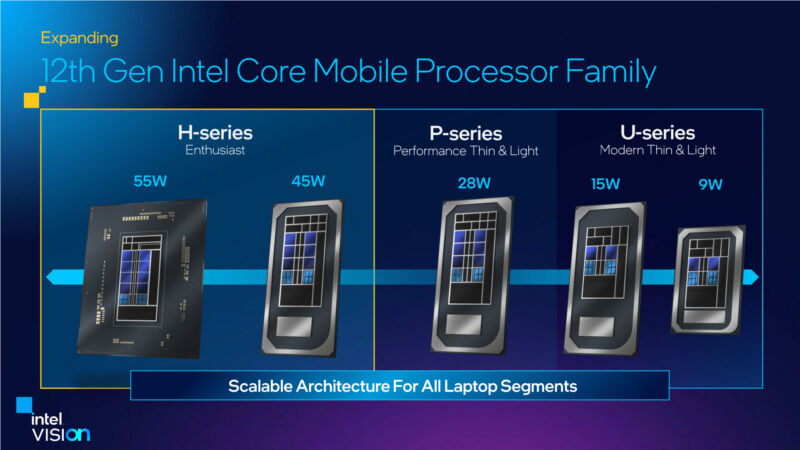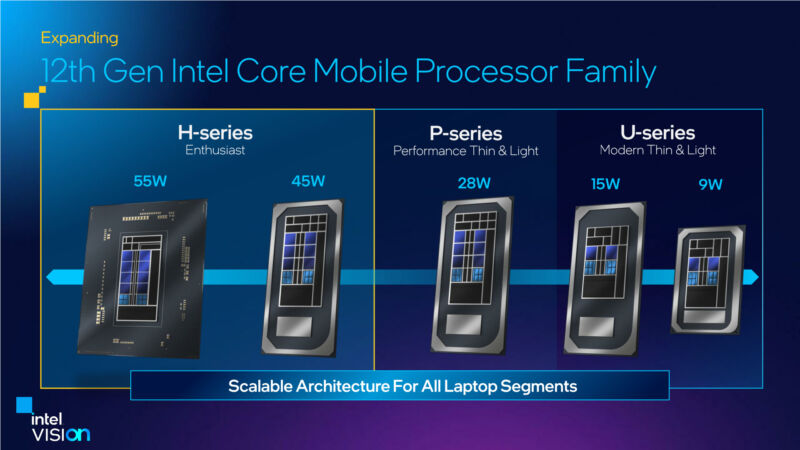
Enlarge / Intel’s HX-series laptop processors bring the company’s desktop CPUs into high-end, high-powered laptops. (credit: Intel)
Earlier this year, Intel announced three iterations of its 12th-generation Alder Lake CPU architecture for laptops: the U-series, which covers thin-and-light Ultrabooks, the P-series for thin-and-light workstation laptops, and the H-series for beefier workstations and gaming laptops with more room for large processor fans and heatsinks.
Now, Intel is adding one more series of chips: the HX series, designed for even faster laptops. Despite sharing a letter with the H-series chips, the H and HX CPUs don’t have a lot in common. The H-series chips are scaled-up versions of Intel’s laptop processors with beefier integrated GPUs, integrated Thunderbolt, and a built-in chipset controller on the same package as the rest of the CPU. The HX chips, on the other hand, use the same dies as Intel’s desktop Alder Lake chips, but are soldered to a laptop’s motherboard rather than inserted into a CPU socket.
| CPU | P- and E-cores | P-core clocks (Boost) | Base TDP | Turbo TDP |
|---|---|---|---|---|
| Core i5-12450HX | 4P/4E | 2.4GHz (4.4GHz) | 55W | 157W |
| Core i5-12600HX (vPro) | 4P/8E | 2.5GHz (4.6GHz) | 55W | 157W |
| Core i7-12650HX | 6P/8E | 2.0GHz (4.7GHz) | 55W | 157W |
| Core i7-12800HX | 8P/8E | 2.0GHz (4.8GHz) | 55W | 157W |
| Core i7-12850HX (vPro) | 8P/8E | 2.1GHz (4.8GHz) | 55W | 157W |
| Core i9-12900HX | 8P/8E | 2.3GHz (5.0GHz) | 55W | 157W |
| Core i9-12950HX (vPro) | 8P/8E | 2.3GHz (5.0GHz) | 55W | 157W |
These CPUs have higher TDPs than their H-series counterparts, with 55 W base TDPs instead of 45 W and 157 W Turbo TDPs rather than the 95-to-115 W TDPs of the H series. The power increase means these chips will run faster for longer than H-series processors at the expense of higher power consumption and heat output. However, our testing of these desktop chips suggests that the Core i7 and i9 processors will benefit more from the boosted power limits than the lower-core-count Core i5 versions.





